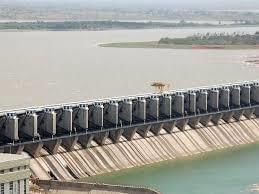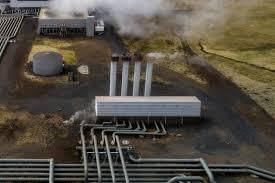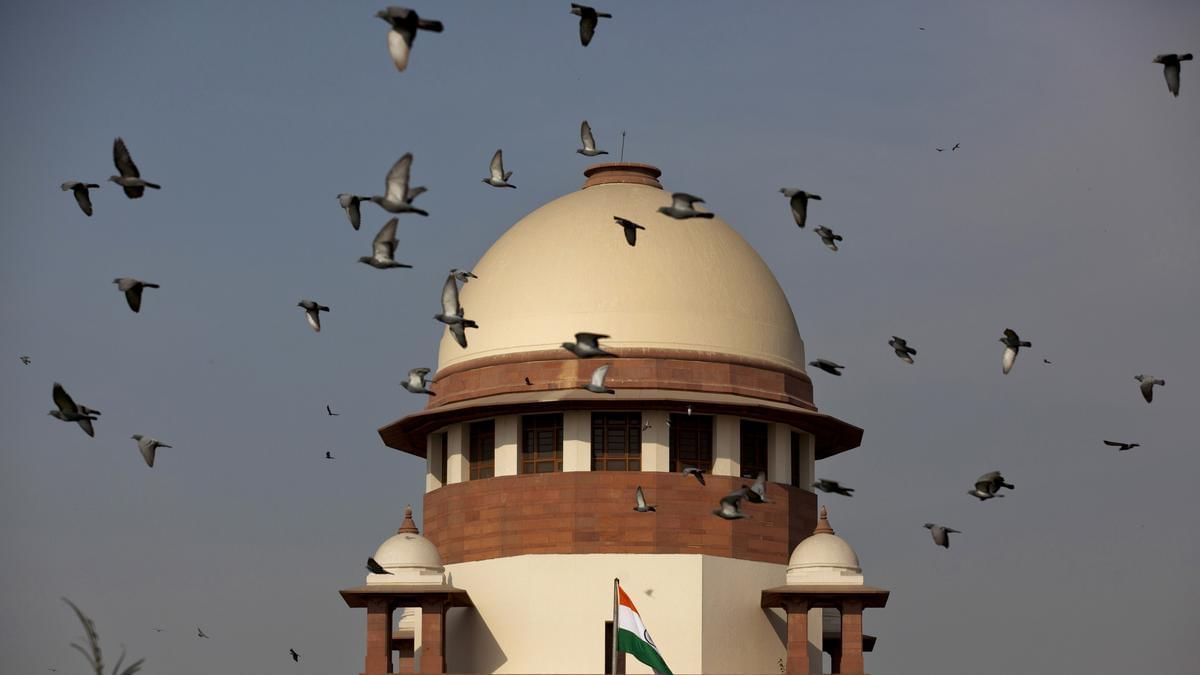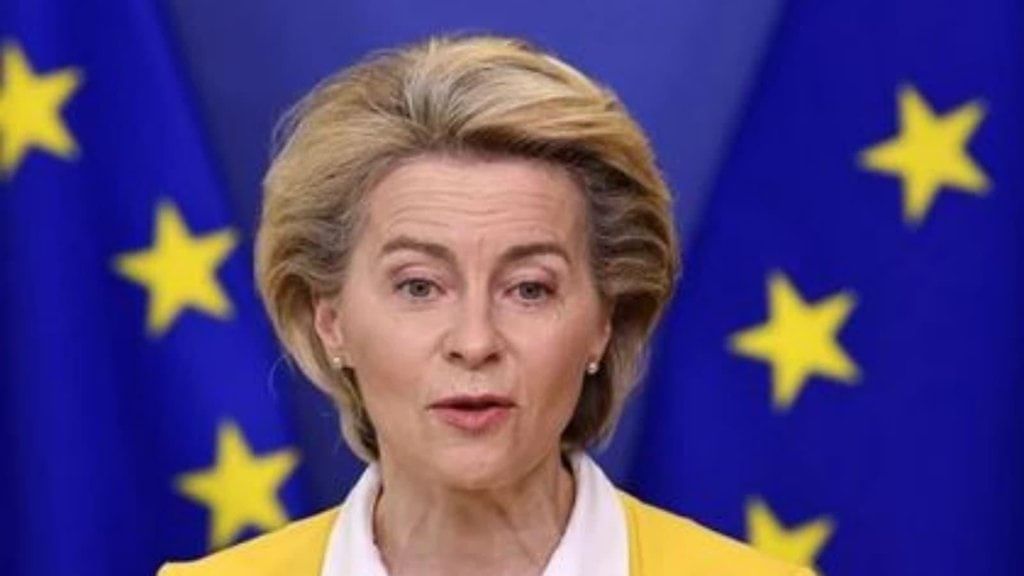UPSC Daily Current Affairs: 18th September 2025 | Current Affairs & Hindu Analysis: Daily, Weekly & Monthly PDF Download
GS3/Economy
Almatti Dam and Upper Krishna Project Phase-III
 Why in News?
Why in News?
The Karnataka government has recently approved the Upper Krishna Project Phase-III, which aims to raise the height of the Almatti Dam. In response, the state of Maharashtra has expressed concerns and warned of potential legal action against this decision.
Key Takeaways
- Maharashtra's opposition is rooted in fears of submergence of villages and agricultural land due to rising water levels.
- Concerns regarding reduced water availability downstream, which could impact irrigation and drinking water projects in Maharashtra.
About Almatti Dam
- Overview: The Almatti Dam is a significant hydroelectric and irrigation project situated on the Krishna River in North Karnataka.
- Completion: The dam was completed in July 2005 as part of the Upper Krishna Irrigation Project (UKP).
- Dimensions: The dam stands at a height of 52.5 meters and stretches 3.5 kilometers in length.
- Power Generation: It has a power generation capacity of 290 MW, utilizing vertical Kaplan turbines with five units of 55 MW and one unit of 15 MW.
- Powerhouses: There are two separate powerhouses, Almatti I and II, that generate electricity before releasing water into the Narayanpur Reservoir.
- Functions: The dam provides irrigation, potable water, hydroelectric power, and plays a crucial role in flood management.
Back2Basics: Krishna River
- Origin: The Krishna River originates near Mahabaleshwar in Maharashtra's Western Ghats.
- Length: It stretches approximately 1,300 kilometers, making it the second-longest river in peninsular India after the Godavari.
- Course: The river flows through several states, including Maharashtra (303 km), Karnataka (480 km), Telangana, and Andhra Pradesh, before emptying into the Bay of Bengal.
- Major Tributaries:
- Right-bank: Ghatprabha, Malprabha, Tungabhadra.
- Left-bank: Bhima, Musi, Munneru.
- Hydropower & Irrigation Projects: Notable projects include Koyna, Tungabhadra, Srisailam, Nagarjuna Sagar, Almatti, Narayanpur, and Bhadra.
In summary, the ongoing developments regarding the Almatti Dam and the Upper Krishna Project Phase-III highlight significant regional concerns, particularly for Maharashtra, emphasizing the balance between infrastructure development and environmental and agricultural sustainability.
GS2/International Relations
Let Griger counters, not guesses, shape Iran Actions
Why in News?
The nuclear issue has resurfaced as a critical topic in global geopolitics, particularly following the U.S. strikes on Iran's Fordow nuclear site in June 2025. In response to Iranian violations of the 2015 nuclear deal, the E3 countries (Britain, France, Germany) invoked the "snapback" clause, which could reinstate stringent UN sanctions. The situation is exacerbated by the withdrawal of International Atomic Energy Agency (IAEA) staff from Iran, creating a void of verified information. In this context, it is essential that diplomacy is based on verification rather than speculation.
Key Takeaways
- The snapback clause has been triggered for the first time since 2015, raising the potential for renewed UN sanctions.
- The lack of IAEA verification has led to a vacuum of reliable information, increasing risks across global markets and regional stability.
- India faces significant challenges related to oil supply and the safety of its citizens in West Asia amidst the unfolding crisis.
Additional Details
- Importance of IAEA Verification: Access by the IAEA replaces speculation with factual data, establishing a foundation for diplomatic negotiations.
- Market Stability: IAEA oversight in conflict zones, as seen in Ukraine, has helped stabilize markets; similar measures in Iran could alleviate volatility.
- Iran’s Sovereignty Concerns: Iran believes that IAEA inspections threaten its sovereignty and could lead to military strikes, as previous attacks have followed IAEA disclosures.
- Risks of NPT Withdrawal: If Iran withdraws from the Nuclear Non-Proliferation Treaty (NPT), it would eliminate the IAEA's legal authority to inspect, leading to potential military escalations and global instability.
The Iran nuclear situation represents a pivotal moment for global non-proliferation and regional stability. It necessitates credible verification, structured dialogue, and ongoing diplomacy rather than mere speculation. For India, the implications extend beyond international order principles, touching on energy security, the safety of its diaspora, and regional peace. By leveraging its credibility in multilateral forums and its technical expertise, India can play a constructive role. The current crisis is a test of whether global powers can prioritize collective security over unilateral actions and competing interests to prevent escalation.
PYQ Relevance
[UPSC 2018] How would the ongoing US-Iran Nuclear Pact Controversy affect India’s national interest? India’s response should be strategic, ensuring its energy security and safeguarding its citizens in West Asia while supporting verification through the IAEA.
GS2/Governance
Bima Sugam: One-Stop Digital Insurance Marketplace
 Why in News?
Why in News?
Bima Sugam, envisioned as the world’s largest online insurance marketplace, was officially launched by the Bima Sugam India Federation (BSIF) at the IRDAI’s headquarters in Hyderabad. The platform will be introduced in phases, starting as an information and guidance hub, with full-fledged transactions to follow as insurers and partners integrate. This phased rollout is designed to give the insurance ecosystem time to adapt.
Key Takeaways
- Bima Sugam aims to unify various insurance offerings under one digital platform.
- The initiative is expected to enhance insurance penetration by focusing on availability, affordability, and accessibility.
- The platform will charge minimal fees and include all insurance companies as members, with many holding equity stakes in BSIF.
Additional Details
- Bima Trinity:This comprises three components:
- Bima Sugam: A unified digital portal integrating insurers and distributors.
- Bima Vistaar: A comprehensive, affordable, all-in-one insurance product.
- Bima Vahak: A women-led field distribution network to expand insurance reach.
- The platform allows users to buy, sell, renew, manage, and claim insurance policies with ease and transparency, similar to how UPI transformed digital payments.
- Bima Sugam will serve as a centralised database to resolve queries and foster innovation by supporting new products.
Bima Sugam represents a significant step towards building India’s Digital Public Infrastructure (DPI) for insurance, aiming to simplify access and increase transparency. It is designed to empower policyholders, deepen insurance penetration, and promote fairness across the value chain, contributing to the national goal of "Insurance for All" by 2047 under Viksit Bharat 2047.
GS3/Science and Technology
New Policy to Boost Geothermal Energy in India
 Why in News?
Why in News?
The Indian government has introduced a new national geothermal energy policy aimed at assessing the commercial viability of geothermal technology. This initiative has attracted interest from companies in the US, Iceland, and Norway, which are exploring research and development (R&D) as well as pilot projects in regions such as the Gulf of Cambay, Arunachal Pradesh, and Uttarakhand.
Key Takeaways
- Geothermal energy utilizes the Earth's heat for power generation and various applications.
- India has significant geothermal potential, estimated at 10.6 GW.
- Abandoned oil wells are being considered for geothermal energy repurposing.
- Collaborations with international firms are underway for enhanced geothermal systems.
Additional Details
- Geothermal Energy: This form of energy harnesses heat from underground sources, such as hot springs, to generate electricity. It can also provide heating, cooling, and support for greenhouse and aquaculture activities.
- Geothermal Potential in India: The Geological Survey of India (GSI) has identified 381 hot springs with temperatures ranging from 35°C to 89°C, with major geothermal sites located in the Himalayan Geothermal Province and the Cambay Graben, among others.
- Process of Generation:The geothermal energy generation process involves several steps:
- Extraction: Drilling wells to access geothermal reservoirs.
- Conversion: Bringing hot water or steam to the surface to drive turbines.
- Electricity Generation: Converting mechanical energy from turbines into electricity through generators.
- Reinjection: Returning cooled water back into the geothermal reservoir to sustain pressure.
- Challenges: High upfront costs and exploration risks pose challenges, with estimates of ₹36 crore required per megawatt of capacity. The new policy will provide support for R&D and pilot projects.
- Potential Benefits: Geothermal energy could significantly lower electricity costs in remote regions such as the Andaman and Nicobar Islands and Ladakh, where current costs are high.
In conclusion, the new geothermal energy policy represents a significant step towards sustainable energy production in India, aiming to leverage natural resources effectively while encouraging innovation and international collaboration.
GS3/Economy
Govt to Push Geothermal Pilots Under New Policy
Why in News?
The Ministry of New & Renewable Energy (MNRE) has introduced its inaugural National Policy on Geothermal Energy, aimed at establishing a framework for the development and regulation of geothermal resources in India.
Key Takeaways
- The policy was officially announced in September 2025.
- It supports India's goal of achieving Net Zero emissions by 2070.
- The scope includes both power generation and direct-use applications.
- MNRE will lead implementation, collaborating with various stakeholders.
- Financial support includes tax incentives and grants.
Additional Details
- Financial & Regulatory Support: The policy offers tax incentives, grants, and concessional financing, alongside long-term leases of up to 30 years. Additionally, Viability Gap Funding (VGF) is provided to cover high initial costs estimated at ₹36 crore per MW.
- The emphasis is on repurposing abandoned oil and gas wells for geothermal energy, with collaborations already in place with ONGC and Vedanta Ltd.
- Global partnerships have been established with countries like Iceland, Norway, the US, and Indonesia for research and development in Enhanced and Advanced Geothermal Systems.
- Currently, five pilot projects have been sanctioned for resource assessment and demonstration in various regions.
India's geothermal energy potential is estimated at 10.6 GW as identified by the Geological Survey of India (GSI), with over 381 hot springs mapped across the country. Although there are no grid-connected geothermal plants yet, ongoing projects include a 20 kW pilot binary-cycle plant in Manuguru, Telangana, and other pilot projects in Ladakh, Gujarat, and Rajasthan. The future roadmap targets a geothermal capacity of 10 GW by 2030 and approximately 100 GW by 2045.
Major Geothermal Sites in India
| Region/State | Site/Province | Key Features & Notes |
|---|---|---|
| Ladakh (Himalayan Province) | Puga Valley | High-temperature hot springs; identified as promising for pilot projects. |
| Himachal Pradesh | Manikaran | Popular hot spring zone; suitable for geothermal plants and tourism. |
| Uttarakhand | Tapoban & Alaknanda Valley | Himalayan geothermal systems; identified for research. |
| Chhattisgarh | Tattapani Field | Well-studied site; suitable for direct heat use. |
| Andaman & Nicobar Islands | Volcanic geothermal fields | High geothermal potential; could significantly reduce power costs. |
Consider the following:
- 1. Electromagnetic radiation
- 2. Geothermal energy
- 3. Gravitational force
- 4. Plate movements
- 5. Rotation of the earth
- 6. Revolution of the earth
Which of the above are responsible for bringing dynamic changes on the surface of the earth?
(a) 1, 2, 3 and 4 only (b) 1, 3, 5 and 6 only (c) 2, 4, 5 and 6 only (d) 1, 2, 3, 4, 5 and 6 *
GS2/Polity
A Judicial Nudge Following Stuck Legislative Business
 Why in News?
Why in News?
The role of the Governor in India’s constitutional framework has been a topic of extensive debate, especially concerning legislative assent under Article 200. Recent judicial verdicts, particularly the Supreme Court's decisions in State of Punjab vs Principal Secretary to the Governor (2023) and The State of Tamil Nadu vs The Governor of Tamil Nadu and Anr. (2025), have intensified this discussion by imposing a three-month time limit for Governors and the President to act on legislative Bills, aiming to resolve ongoing constitutional deadlocks.
Key Takeaways
- The Supreme Court has set a three-month deadline for Governors to act on Bills to prevent legislative paralysis.
- Article 200 provides the Governor with four options regarding state legislature Bills, but the Governor must act on the advice of the Council of Ministers.
- Judicial interventions have sparked concerns about the balance of powers and judicial overreach.
Additional Details
- Article 200: This provision allows the Governor to either assent to a Bill, withhold assent, return it for reconsideration (if not a money Bill), or reserve it for the President's consideration.
- Judicial Precedents: Historical cases like Shamsher Singh vs State of Punjab (1974) and Nabam Rebia (2016) have reinforced that Governors should act based on ministerial advice, limiting their discretion.
- Concerns have arisen regarding the indefinite delays by Governors in acting on critical Bills, effectively undermining the legislative process and the democratic will of the people.
- The Supreme Court's ruling highlights the judiciary's role in ensuring that federalism and representative democracy are upheld, despite criticisms of potential judicial law-making.
The ongoing debate surrounding Article 200 illustrates the tension between constitutional theory and political practice. The framers of the Constitution intended to limit the Governor's discretion, thereby ensuring the Governor remains subordinate to the elected government. The necessity for judicial intervention indicates a failure in political accountability, and the Supreme Court’s rulings serve to reinforce democratic principles and cooperative federalism within India's governance framework.
GS2/Governance
Swasth Nari, Sashakt Parivar Abhiyaan (SNSPA)
Why in News?
On September 17, 2025, the Prime Minister launched the Swasth Nari, Sashakt Parivar Abhiyaan (SNSPA) in conjunction with the 8th Rashtriya Poshan Maah, highlighting the government's commitment to enhancing health services for women, children, and families, particularly in rural and underserved areas.
Key Takeaways
- Joint initiative by the Ministry of Health and Family Welfare and the Ministry of Women and Child Development.
- Focus on strengthening health services for women and children in rural, tribal, and underserved regions.
- Over 10 lakh health camps to be organized across various health facilities.
Additional Details
- Launch Date: September 17, 2025.
- Health Screenings: Targeting conditions such as anaemia, hypertension, diabetes, TB, breast and cervical cancers, sickle cell disease, and reproductive health issues.
- Services Offered: Comprehensive maternal and child health services including antenatal care, immunization, nutrition counselling, menstrual hygiene, mental health support, and lifestyle awareness programs.
- Digital Monitoring: The SASHAKT portal will facilitate real-time data tracking and ensure transparency.
- Community Involvement: Collaboration with private hospitals, Self-Help Groups (SHGs), Anganwadis, local governance institutions, and volunteers.
- Tribal Focus: Provision of specialized medical services and tailored counselling for remote and tribal communities.
What is Rashtriya Poshan Maah?
Overview: The Rashtriya Poshan Maah is part of the POSHAN Abhiyaan (National Nutrition Mission), celebrated annually since 2018.
- 2025 Edition: This marks the 8th edition, aimed at synergizing efforts for improved nutrition outcomes.
- Aim: To mobilize communities to enhance the nutrition of children, pregnant women, lactating mothers, and adolescent girls.
- Activities: Includes Poshan Panchayats, health and nutrition camps, recipe demonstrations, rallies, and outreach programs in schools and Anganwadis.
- Focus Areas (2025):
- Anaemia Mukt Bharat and awareness of micronutrients.
- Complementary feeding practices for infants and toddlers.
- Establishment of Poshan-Vatika (nutri-gardens) for food security.
- Promotion of traditional and regional diets for sustainable nutrition.
In conclusion, the SNSPA and Rashtriya Poshan Maah initiatives are pivotal in addressing health and nutrition challenges faced by women and children, especially in marginalized communities, ensuring a holistic approach to health and well-being.
UPSC 2024
With reference to the Pradhan Mantri Surakshit Matritva Abhiyan, consider the following statements:
- 1. This scheme guarantees a minimum package of antenatal care services to women in their second and third trimesters of pregnancy and six months post-delivery health care service in any government health facility.
- 2. Under this scheme, private sector health care providers of certain specialities can volunteer to provide services at nearby government health facilities.
Which of the statements given above is/are correct?
- Options: (a) 1 only (b) 2 only* (c) Both 1 and 2 (d) Neither 1 nor 2
GS3/Defence & Security
Upgradation of Army Radars
Why in News?
Following Operation Sindoor and the recent incursions of Pakistani drones, the Indian Army is enhancing its air defence capabilities by upgrading to advanced radar systems. This initiative aims to effectively counter low-RCS (radar cross-section) drones and other aerial threats along the northern and western borders.
Key Takeaways
- The Army is focusing on upgrading air defence radars to address emerging threats.
- Radars play a crucial role in detecting and tracking aerial objects.
Additional Details
- What are Radars: Radar stands for Radio Detection and Ranging. It utilizes radio waves to locate, track, and measure the speed of objects. The primary components include:
- Transmitter: Emits radio signals.
- Receiver: Captures reflections from objects.
- Functions: Radars measure direction, distance (via time delay), and velocity (via Doppler shift).
- Types in Air Defence:
- Surveillance Radars: Monitor airspace and detect aerial objects; not directly connected to weapons.
- Fire Control Radars: Provide targeting data to guide anti-aircraft guns or missiles.
- Current Indian Capabilities:
- Indian Air Force: Operates high-power and medium-power radars for detecting long-range, high-altitude threats such as jets and AWACS.
- Utilizes fire control systems like the 3D Central Acquisition Radar and Rajendra Radar.
- Indian Army: Employs low-level light-weight radars to detect low-flying, small radar cross-section objects like drones.
- Utilizes upgraded Flycatcher Air Defence Tactical Control Radar systems for weapon aiming and local defence management.
- India’s Air Defence Infrastructure:
- Missile Systems: Includes the Russian S-400 and indigenous Akash missile system.
- Akashteer System: Integrates radars, sensors, air defence guns, and communications into a real-time operational air picture.
- IAF’s IACCS: Unifies data from multiple assets for coordinated detection and interception.
- Mission Sudarshan Chakra: An ongoing modernization program; recent tests of the Integrated Air Defence Weapon System have been conducted by DRDO.
This comprehensive upgrade of the Army's radar capabilities is crucial for enhancing national security amid evolving aerial threats.
Consider the following activities:
- Identification of narcotics on passengers at airports or in aircraft
- Monitoring of precipitation
- Tracking the migration of animals
In how many of the above activities can the radars be used?
- (a) Only one
- (b) Only two*
- (c) All three
- (d) None
GS3/Environment
Ant Queens Giving Birth to Different Species
 Why in News?
Why in News?
A groundbreaking study published in Nature (2025) has unveiled that the Mediterranean harvester ant species, Messor ibericus, has the remarkable ability to produce male offspring of a different species, Messor structor.
Key Takeaways
- Messor ibericus: A widely distributed Mediterranean ant known for its grain-harvesting behavior and large colonies.
- Hybrid Workers: All worker ants are hybrids, containing DNA from both species.
- Cross-Species Male Production: Approximately 10% of the queen's eggs develop into pure Messor structor males, independent of nearby structor colonies.
- Evolutionary Significance: This is the first documented case of a species naturally producing offspring of another species, challenging traditional species concepts.
Additional Details
- Genetic Signature: The males exhibit Messor ibericus mitochondrial DNA, confirming their maternal origin.
- Reproductive Strategy: The study indicates that Ibericus sperm leads to the production of new queens, while Structor sperm generates hybrid workers and additional structor males.
- Colony Advantage: By producing both hybrid workers and pure structor males, the queens ensure compatible mates for future generations, sustaining both lineages.
This study illustrates a unique evolutionary strategy that emphasizes genetic diversity and adaptability within ant colonies, potentially reshaping our understanding of species interactions and reproductive mechanisms in nature.
UPSC 2024 Question: Which one of the following shows a unique relationship with an insect that has coevolved with it and that is the only insect that can pollinate this tree?
- (a) Fig*
- (b) Mahua
- (c) Sandalwood
- (d) Silk cotton
GS2/International Relations
EU-India Strategic Roadmap: Trade, Tech, and Defence
 Why in News?
Why in News?
The European Union has launched a new initiative to enhance cooperation with India, focusing on key areas such as trade, technology, defence, connectivity, and climate action. This announcement reflects the evolving global geopolitical landscape and positions India as a significant partner for Europe in fostering growth, security, and a rules-based international order.
Key Takeaways
- The roadmap aims to elevate EU-India relations, fostering long-term collaboration.
- It emphasizes the finalization of a Free Trade Agreement (FTA) by year-end, potentially the largest globally.
- Challenges remain, including India's ties with Russia, which may affect diplomatic relations.
Additional Details
- Trade and Economic Ties: The EU is India's largest trading partner, and the FTA is central to the roadmap. The strategy aims to diversify supply chains and enhance investment flows.
- Technology and Innovation: Focus on emerging technologies and digital transformation through initiatives like the EU-India Trade and Technology Council (TTC) and collaboration in the Horizon Europe programme.
- Defence and Security Cooperation: Introduction of an EU-India Security and Defence Partnership, addressing areas such as maritime security and cyber defence, along with negotiations for a Security of Information Agreement.
- Connectivity and Global Governance: Emphasis on regional initiatives like the India-Middle East-Europe Economic Corridor (IMEC) and cooperation in multilateral forums, alongside enhanced labour mobility.
- Climate Change and Sustainability: Commitment to advancing climate action and clean energy cooperation, focusing on sustainable development and green technologies.
In response, PM Modi welcomed the roadmap, highlighting India's commitment to strengthening relations with the EU and advocating for a peaceful resolution to international conflicts. This strategic roadmap illustrates India’s growing global influence and the EU's recognition of India as a critical partner in shaping the future of global economic and security frameworks.
|
38 videos|5264 docs|1112 tests
|
FAQs on UPSC Daily Current Affairs: 18th September 2025 - Current Affairs & Hindu Analysis: Daily, Weekly & Monthly
| 1. What is the significance of the Almatti Dam and the Upper Krishna Project Phase-III in India's water management strategy? |  |
| 2. How does the Bima Sugam initiative aim to transform the insurance sector in India? |  |
| 3. What are the key features of the new policy to boost geothermal energy in India? |  |
| 4. How does the Swasth Nari, Sashakt Parivar Abhiyaan (SNSPA) aim to empower women and families in India? |  |
| 5. What advancements have been made in the upgradation of army radars, and why are they important for national security? |  |
















